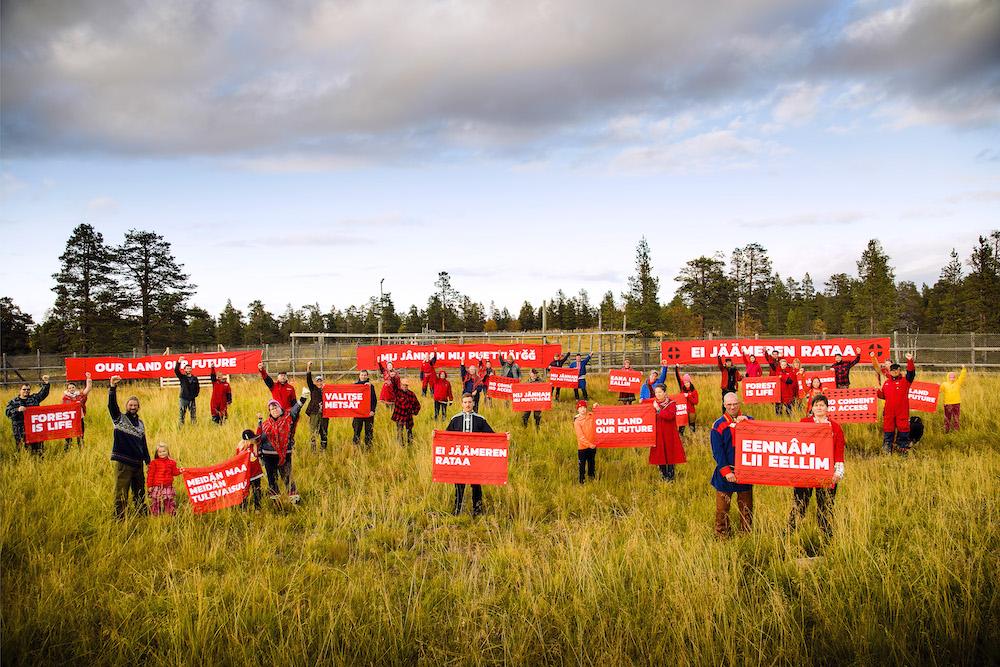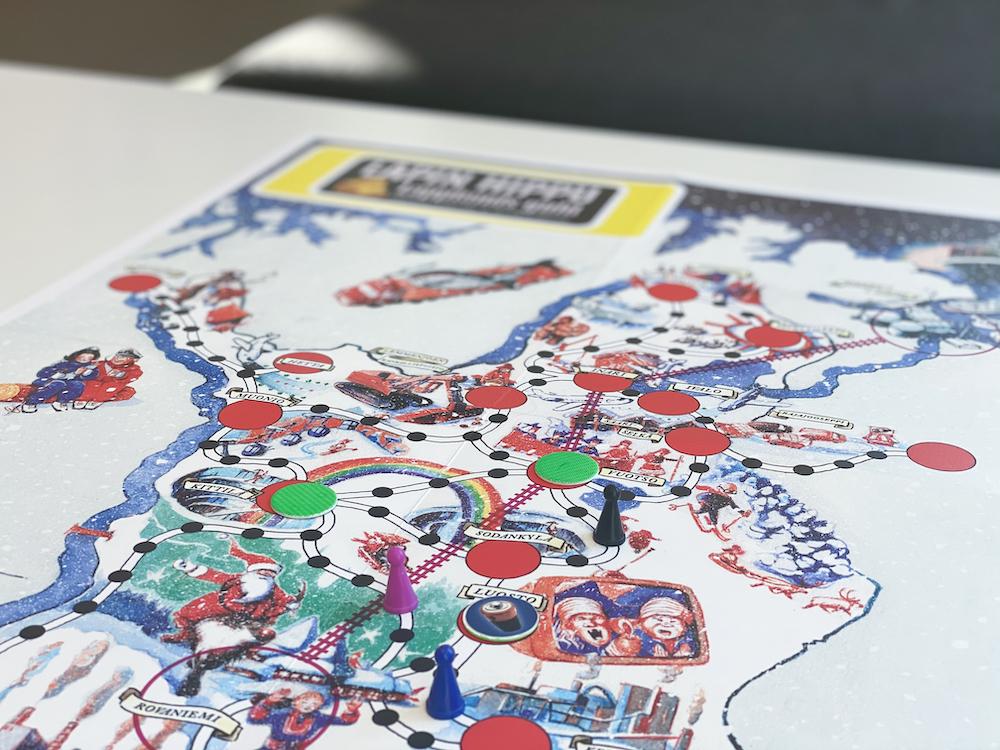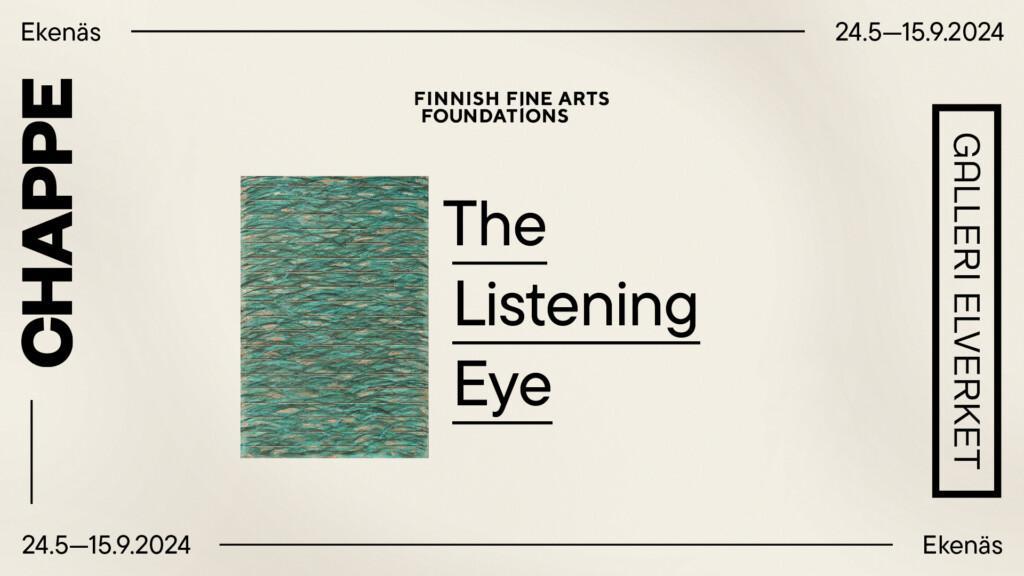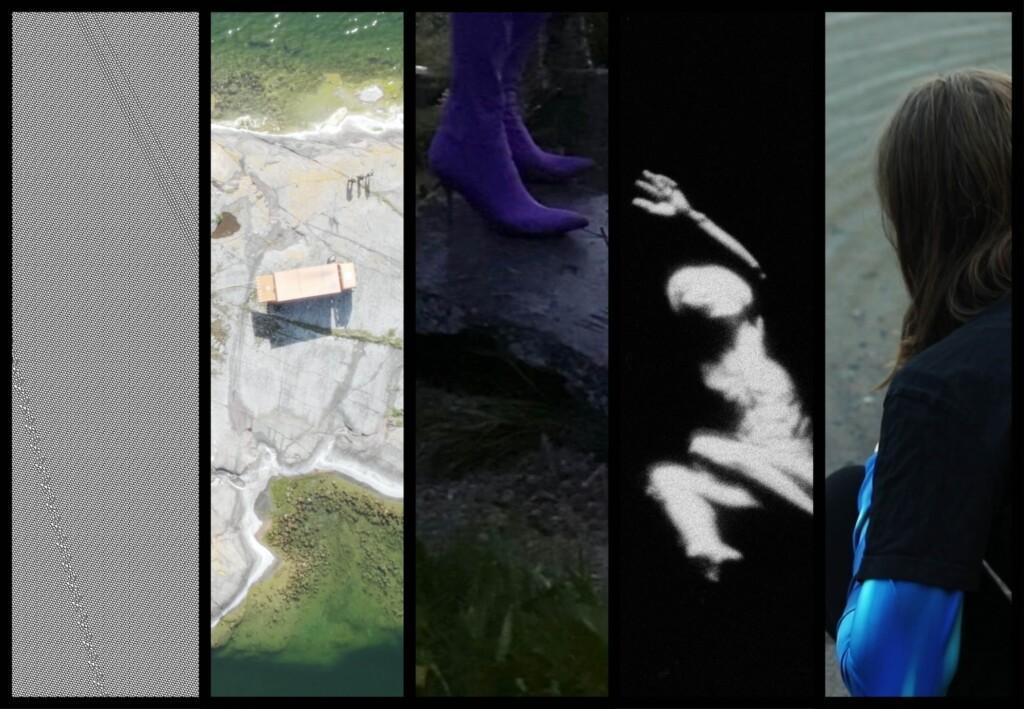
Text in Sámi below.
Demarkation
More than a century ago, when newly independent Finland was still finding its place and a way to exist, policies were laid down that still affect the status of the Sámi people today.
The still-current idea of the nation state formed in the second half of the 19th century is in many ways an excellent one, but it has also brought much grief into the world. Examples we could mention are the way that the nation state is frequently in conflict with the rights and interests of the indigenous peoples living within its borders. This contradiction is evident around the globe, including in Finland.
Finns rarely think of colonialism as being a part of Finnish history, but that is a misconception. There is good reason to describe the Finnish State, too, as being a colonial power within its own borders.
“Finland tore us loose from our lands and stole our right to them. Finland exploited and ravaged, and obliterated our memories, our history,” the Sámi artist-activist Jenni Laiti says.
“Colonialism brought cultural assimilation and forced displacements. It has taken a long time to get back even a part of what was lost, and we are still in a situation where we are losing ourselves piece by piece.”
Art can be seen as an end in itself, as art for art’s sake. It can also be seen as a tool intended to change viewers’ and experiencers’ ideas, and maybe even the world. But is that tool art if an activist uses it?
In the changing media environment and society of the 2000s activists have found numerous new means and channels for promoting their cause. Sometimes, it can make sense to create pictures that play with propaganda images and then share them on social media. Sometimes, there is also reason to hold demonstrations where the only audience is forest animals – and a photographer. It can also be worth bringing these art-like works into a gallery.
All the works in this exhibition fall somewhere into the swirling crosscurrents of art and activism.
It would be a mistake to define these works purely as art or solely as activism. It is perfectly possible for them to be two things at the same time. A work can be both art and activism, and nor do the two cancel each other out.
In this exhibition it is pointless to wonder what category each work falls into. Far more important than compartmentalization is thinking about what the makers of the works have had to say.
What do viewers ultimately take away from this exhibition? Hopefully, at least the idea that, while we look back at the past century of independent Finland, we can also think about the century to come.
It is our responsibility to make sure we learn from past mistakes. We start that learning process by being aware of the existence of those mistakes.
Jari Tamminen
Rájágeassin
Badjelaš čuohte jagi dassái go iehčanas Suopma ozai báikkis ja vuogis riikan, de dahkkojuvvojedje válljemat, mat váikkuhit ain otnábeaivvege sámiid dillái.
1800-logu loahpabealde hápmašuvvan idea dálá nášunalstáhtas lea máŋgga láhkai buorre, muhto dat lea maiddái buktán morrašiid máilbmái. Ovdamearkan sáhttá máinnašit dan, mo našunalstáhtta ja dan siste ealli eamiálbmogiid ovddut ja vuoigatvuođat leat dávjá vuostálagaid. Dát vuostálasvuohta oidno birra máilmmi, maiddái Suomas.
Suopmelaččat hárve jurdilitge ahte kolonialisma livččii oassi Suoma historjjás, muhto dakkár jurdda lea boastut. Suoma stáhta sáhttá buriid ákkaiguin govvet maiddái kolonialisttalažžan rájáidis siste.
”Suopma gaikkui min luovus eatnamisttámet ja rivvii vuoigatvuođaideamet dasa. Suopma geavahii ja illástii, dat sihkui eret muittuideamet, historjjásteamet”, sápmelaš dáiddár-aktivista Jenni Laiti cealká.
”Kolonialisma buvttii kulturassimilašuvnna ja bággofárremiid. Lea bistán guhká oažžut ruovttoluotta oppa oasige das mii lea massojuvvon, ja ain lea dilli dakkár, ahte mii massit iežamet dađistaga bihtáid bihtáid mielde.”
Dáidaga sáhttá oaidnit daninassii mávssolažžan, dáiddan dáidaga dihte. Dáidaga sáhttá maiddái oaidnit bargoneavvun, man ulbmilin lea nuppástuhttit oaidni dahje vásiheaddji jurdagiid, vejolaččat vel su máilmmige. Muhto leago dat bargoneavvu, juos dan geavaha aktivista?
2000-logus ovttat láhkai nuppástuvvi mediabirrasis ja servodagas aktivisttat leat gávdnan olu ođđa dábiid ja kanálaid ovddidit áššiideaset. Muhtimin sáhttá heivet stoahkat propagándagovaiguin nu ahte dat leat juohkin láhkai sosiálamedias. Nuppe vuoro fas lea buoret lágidit miellačájáhusaid doppe, gos geahččin leat dušše meahcieallit – ja govvejeaddji. Sáhttá leat buorre maiddái buktit dáid dáiddabargguid museai.
Buot dán čájáhusa govat gártet gosa nu dáidaga ja aktivismma báruid gaskii.
Dáid dáiddabargguid meroštallan dušše dáiddan dahje dušše aktivisman livččii boastut. Lea áibbas vejolaš, ahte dat leat seammás guokte eará ášši. Dáiddaduodji sáhttá leat sihke dáidda ja aktivisma, eaige dat geahpet goabbat guoimmiska fámu.
Dán čájáhusas ii leat mearkkašupmi das, man jovkui guđege dáiddaduodji gullá. Olu deháleabbo go kategoriijaide juohkin, lea smiehttat dan, mii dahkkiin leamaš dadjamuššan.
Mii dán čájáhusas de loahpa loahpas báhcá geahčči millii? Sávvamis aŋkke jurdda das, ahte seammás go geahččat maŋos guvlui iehčanas Suoma vássán jahkečuođi, de sáhttit smiehttat maiddái boahttevaš jahkečuođi.
Min ovddasvástádus lea fuolahit, ahte oahppat dahkkon feaillain. Oahppanproseassa álgá das, go mii šaddat diđolažžan, ahte dakkár feaillat leat.
Jari Tamminen

Current exhibitions
Elverket
Opening hours
Tue 11–17
Wed 11–20
Thu–Sun 11–17
Mon closed
Sinne
Opening hours
Tue–Sun 12–17
Mon closed


